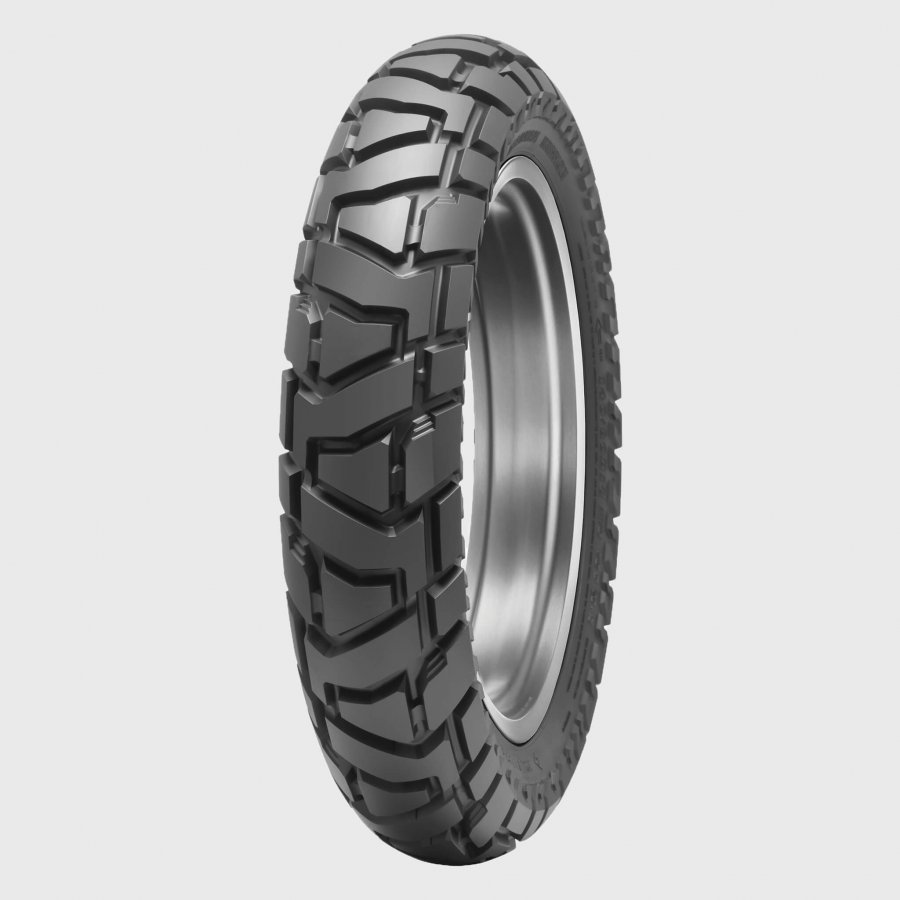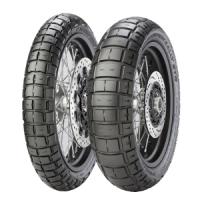Motorcycle Tyre Guide to Interpreting Load and Speed Ratings
Motorcycle Tyre Guide to Interpreting Load and Speed Ratings
Blog Article
Check out the Value of Picking the Right Tyres With Our Informative Motorcycle Tire Overview
Picking the ideal tires is crucial for any kind of Motorcycle lover. The best tyres enhance performance, improve safety and security, and add to total convenience during trips. Comprehending the various types, dimensions, and upkeep methods can considerably influence your riding experience. As bikers face varied surfaces and conditions, knowing how to pick the most effective tires comes to be vital. What elements should be thought about to ensure peak performance? The answers wait for in the adhering to sections.
Understanding Different Kinds of Motorcycle Tyres
Although choosing the right sort of Motorcycle tyre may seem frustrating, recognizing the different choices available can greatly enhance a cyclist's experience. Motorcycle tires are largely classified into 3 types: touring, sport, and off-road. Visiting tires are made for long-distance traveling, using resilience and convenience on highways. These tires include a walk pattern that gives outstanding grasp and stability, making them appropriate for numerous weather conditions.Sport tires, on the various other hand, prioritize efficiency and handling, including a softer rubber compound that improves grasp throughout cornering. They are optimal for cyclists who appreciate spirited trips on twisty roadways or racetracks. Off-road tires are tailored for tough surface, with a hostile tread pattern that offers grip on loosened surfaces like dirt or crushed rock.
Analyzing Your Riding Style and Needs
When examining riding design and requires, recognizing just how different riding conditions impact efficiency is essential. This examination can guide bikers in picking the appropriate tyre types that line up with their details needs. By thinking about variables such as terrain and climate, riders can make educated choices for ideal safety and security and experience.
Riding Conditions Effect
As bikers browse different terrains and weather, recognizing exactly how these elements affect Motorcycle performance becomes vital. Various riding settings, such as damp, dry, or off-road, demand particular tyre qualities to ensure security and optimal handling. Damp conditions call for tyres that offer far better hold to prevent hydroplaning, while off-road riding demands robust step patterns for grip on loose surface areas. In addition, temperature variations can impact tire stress and efficiency, calling for changes based on the problems faced. Cyclists should analyze their common courses and environments when picking tyres, as the ideal selection can considerably enhance their riding experience, ensuring both convenience and safety in varied situations. Matching tires to riding problems is necessary for effective Motorcycle efficiency.
Tire Types Introduction
Understanding the various kinds of Motorcycle tyres is important for cyclists intending to enhance their performance and safety and security. Each tire type deals with particular riding conditions and styles. Sporting activity tires, designed for high grip and agility, are excellent for hostile riding and track days. Touring tyres focus on long life and convenience, making them suitable for long-distance journeys. Off-road tyres feature much deeper footsteps for grip on uneven surfaces, attracting journey hunters. Cruiser tyres offer a smooth experience, usually emphasizing appearances for cruisers and choppers. Lastly, dual-sport tires mix features of both on-road and off-road tyres, serving flexible motorcyclists. Assessing individual riding styles and needs assurances that the appropriate tire kind is picked, inevitably boosting total riding experience and safety and security.
The Effect of Tire Size on Efficiency
Tyre size considerably affects a bike's general efficiency, influencing grip, handling, and stability. The diameter and size of tyres can notably change a bike's characteristics. Larger size tyres can boost high-speed efficiency, supplying smoother trips and enhanced security throughout straight-line traveling. They may likewise call for more effort for quick maneuvering. On the other hand, narrower tyres often tend to supply better agility and responsiveness, making them suitable for dilemmas and intricate riding conditions.Additionally, the facet ratio, which connects to the tire's height, plays an important function in efficiency attributes. A reduced profile tyre might enhance cornering security however can endanger comfort due to reduced padding. Inevitably, picking the proper tyre size straightens with the biker's choices and intended use, whether for sport, touring, or off-road riding. Understanding these subtleties assurances peak efficiency and enhances the general riding experience.
Tread Patterns and Their Value
Walk patterns on Motorcycle tyres play a vital function in determining performance, influencing aspects such as grasp and handling. Various sorts of step layouts deal with various weather and terrains, making sure perfect traction and stability. Understanding these patterns is very important for cyclists looking for to improve their Motorcycle's performance and safety.
Kinds Of Tread Patterns
The performance of a motorbike is significantly affected by the type of tread pattern on its tires. Numerous walk patterns offer specific features, providing to various riding problems. For circumstances, slick tires include a smooth surface area, suitable for dry problems and racing, giving optimum hold. On the other hand, tyres with intricate patterns and deep grooves are created for damp or off-road conditions, enhancing water variation and traction. Some tread designs, such as dual-purpose tires, strike an equilibrium for both on-road and light off-road usage. motorcycle tyre guide. Additionally, sporting activity Get More Info tires typically possess a much more aggressive walk pattern, enhancing cornering security. Recognizing these kinds of step patterns assists bikers pick the proper tyres for their intended riding experiences and environmental conditions
Influence on Performance
Picking the right walk pattern substantially influences a bike's performance in different riding conditions. Walk patterns are developed to optimize grip, taking care of, and security, directly impacting cornering ability and braking performance. A much more hostile step design improves traction on irregular surface areas, making it suitable for off-road riding. Alternatively, a slicker tread pattern advertises smoother rides on paved roadways, decreasing moving resistance and boosting fuel effectiveness. The depth and plan of grooves also play an essential duty, enabling efficient water variation and minimizing hydroplaning threats. Inevitably, picking a suitable walk pattern customized to certain riding designs and environments guarantees enhanced control, safety and security, and general riding experience, highlighting the value of this choice for Motorcycle lovers.
Climate and Terrain Suitability
Weather problems and terrain kinds considerably influence the suitability of Motorcycle tire tread patterns. In wet problems, tires with much deeper grooves and particular patterns are crucial to channel water away and minimize the threat of aquaplaning. On the other hand, a flatter step layout offers perfect surface area call for completely dry roads, improving hold and security. For off-road riding, bumpy tires give increased traction on loose surfaces like mud and gravel. Each walk pattern offers a distinctive objective; therefore, selecting the suitable tyre is essential for efficiency and safety and security. Cyclists need to consider their typical riding environment-- whether urban, rural, or differed terrains-- to assure their tyres can adequately handle the conditions, advertising a more secure and extra delightful riding experience.
Keeping Your Motorcycle Tyres for Long Life
While Motorcycle fanatics often concentrate on efficiency and aesthetics, neglecting tire upkeep can cause premature wear and harmful riding conditions. On a regular basis inspecting tyre pressure is critical, as both under-inflation and over-inflation can detrimentally influence managing and grip. On top of that, keeping the proper pressure can enhance gas effectiveness and general performance.Routine evaluations for signs of damages, such as leaks or splits, likewise play a vital function in extending tyre life. Maintaining tyres tidy from debris and contaminants warranties peak traction. Furthermore, revolving tires frequently helps disperse wear equally, prolonging their lifespan.Proper placement and balancing of the wheels are necessary for maintaining security and decreasing irregular wear. Adhering to the maker's referrals for tyre replacement periods assures that riders are furnished with dependable and safe tires. By prioritizing these upkeep methods, motorcyclists can appreciate a safer and longer-lasting riding experience.
Acknowledging Tyre Use and When to Change
To assure perfect security and performance, motorcyclists have to be watchful in acknowledging tyre wear and understanding when to change their tires. Tire step depth is a critical indicator; a depth of 1.6 mm or less usually indicates the requirement for substitute. Motorcyclists must also analyze the tyres for uneven wear patterns, which can suggest alignment or suspension issues. Cracks, bulges, or noticeable cables are significant signs of wear and tear and warrant instant replacement.Monitoring tyre pressure is essential as under-inflation can accelerate wear and concession safety and security. In addition, motorcyclists should understand the age of their tires; also if the walk appears sufficient, tyres older than 5 years might need changing as a result of rubber deterioration. Routine inspections and upkeep will certainly assist determine that tyres continue to be in peak condition, ultimately boosting both motorcyclist security and overall Motorcycle efficiency.

Tips for Choosing the Right Tyres for Your Bike
Picking the best tyres for a bike is paramount for ensuring suitable efficiency and safety and security, specifically after recognizing the signs of wear that necessitate replacement. Riders should consider their riding style and the types of conditions they generally experience. Sport tires use improved grip for aggressive riding, while visiting tires offer longevity and comfort for long journeys.Next, it's crucial to examine the maker's specs for the Motorcycle, as these standards ensure compatibility. Additionally, assessing tire dimension, walk pattern, and rubber compound can influence efficiency. Motorcyclists ought to also consider climate condition; specific tires do much better in wet or completely dry environments.Finally, buying from reputable brand names can ensure quality and integrity, while speaking with fellow bikers or specialists can supply important understandings. go By very carefully considering these variables, motorcyclists can select tires that boost their Motorcycle's performance, safety and security, and overall riding experience.
Regularly Asked Concerns
Just How Do Weather Condition Conditions Impact Tyre Efficiency?
Weather greatly influence tyre efficiency, affecting grip, taking care of, and use. Rainfall can decrease grip, while severe warm might cause getting too hot. Cold temperature levels can solidify rubber, endangering flexibility, consequently affecting general safety and security and ability to move when traveling.
Can I Mix Different Tire Brands on My Motorcycle?
Mixing various tire brands on a motorbike can bring about inconsistent handling and performance - motorcycle tyre guide. Experts recommend utilizing the very same brand and design for both front and back tyres to ensure optimum safety and stability during experiences
What Is the Ordinary Lifespan of Motorcycle Tyres?

Do Motorcycle Tyres Need to Be Well balanced?
Motorcycle tyres do call for balancing to ensure also weight distribution. Effectively balanced tires enhance stability, boost handling, and decrease irregular wear, ultimately adding to a more secure and much more comfy riding experience for motorcyclists.
How Commonly Should I Check My Tyre Stress?
Normal checks of tyre pressure are crucial for safety and performance. It is advised to inspect Motorcycle tyre stress at the very least once a month and previously lengthy adventures, guaranteeing suitable handling and gas efficiency. These tyres feature a walk pattern that gives outstanding hold and security, making them ideal for numerous weather conditions.Sport tyres, on the other hand, prioritize pop over to this site efficiency and handling, including a softer rubber substance that boosts grip during cornering. On the other hand, narrower tyres have a tendency to supply far better dexterity and responsiveness, making them ideal for tight corners and elaborate riding conditions.Additionally, the aspect ratio, which associates to the tyre's height, plays an essential duty in efficiency features. Sticking to the manufacturer's recommendations for tyre replacement intervals guarantees that riders are equipped with trustworthy and secure tires. To ensure suitable security and performance, bikers should be watchful in acknowledging tyre wear and knowing when to change their tires. Sporting activity tyres offer improved grip for aggressive riding, while touring tires give longevity and convenience for long journeys.Next, it's important to check the manufacturer's specifications for the Motorcycle, as these standards ensure compatibility.
Report this page